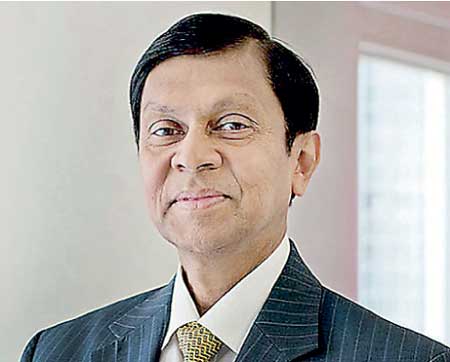Friday Apr 19, 2024
Friday Apr 19, 2024
Wednesday, 12 April 2017 00:00 - - {{hitsCtrl.values.hits}}
 By Ajith Nivard Cabraal
By Ajith Nivard Cabraal
Sri Lanka’s public debt was Rs. 7,391 billion on 31 December 2014 (about 70% of GDP). It rose to Rs. 8,503 billion by 31 December 2015 (about 76% of GDP), and according to estimates it has risen to approximately Rs. 9,700 billion by 31 December 2016, (about 82% of GDP); an unprecedented increase of about Rs. 2,309 billion (or 31%) in just two years!
In that scenario, the Prime Minister has repeatedly claimed that the Government is facing a massive debt crisis which has made it imperative that the ownership of the Hambantota Port and 15,000 acres of surrounding lands be “leased” to foreign investors for a period of 198 years. He has also claimed that such action would reduce the debt by $ 1,100 million, or about Rs.165 billion.
In the meantime, it is now well known that the unwise and dubious policies of the present Government’s economic team caused the massive depreciation of the rupee during 2015 and 2016, adding at least Rs.450 billion to the public debt, while the increase in interest rates during 2015 and 2016 is estimated to have added a further Rs.125 billion to the debt servicing cost; a total of about Rs.575 billion.
In addition, the politically-motivated increase in public servants’ and pensioners’ emoluments increased the Government’s expenditure by about Rs.400 billion for the two years 2015 and 2016, which too, had to be borrowed by the Government. Accordingly, any person could easily work out that the sales proceeds of the Port and surrounding lands would be only about 1.7% of the current public debt, while the debt increase due to the depreciation of the rupee, the increase in interest rates and the increase in public servants’ emoluments totaling Rs. 975 billion, is as much as 10.0% of the current public debt; the entirety of which the present Government should be held responsible.
If one asset is sold, and funds so raised applied to acquire a better-performing asset, such action would make sound business sense. However, in the case of the Hambantota Port, the sales proceeds are expected to fund the budget of the government, and (according to the Central Bank Governor), to partially replenish the foreign reserves of the Central Bank which have eroded from $ 8,208 million as at 31 December 2014 to just $ 5,100 million by mid-March 2017. Consequently, selling the Hambantota Port and the adjoining lands could be likened to an investor selling the best shares in his portfolio to raise money to pay his grocery bill!
The Hambantota Port is undoubtedly Sri Lanka’s most important growth-stimulating asset and is the country’s foundation for economic growth for the next several decades. Selling this strategic asset to foreigners to ward off a much-hyped crisis that this government has wittingly or unwittingly created, but “marketed” shrewdly in order to justify this highly-controversial, anti-national sale, is clearly against the long-term interests of the country and its future generations.
Foreign investors may be naturally driven by the greed to enjoy the massive windfall through the hasty acquisition of this strategic asset at a fraction of its true long-term value. However, they would do well to remember that if they do so, they run the risk of a future Sri Lankan administration restoring the current status quo for the greater long term well-being of the people of Sri Lanka. Sri Lankan history records many instances where assets alienated against the will of the people were re-vested with the people. There is no reason to believe that the future would be any different to the past.
(The writer is former Governor of the Central Bank.)